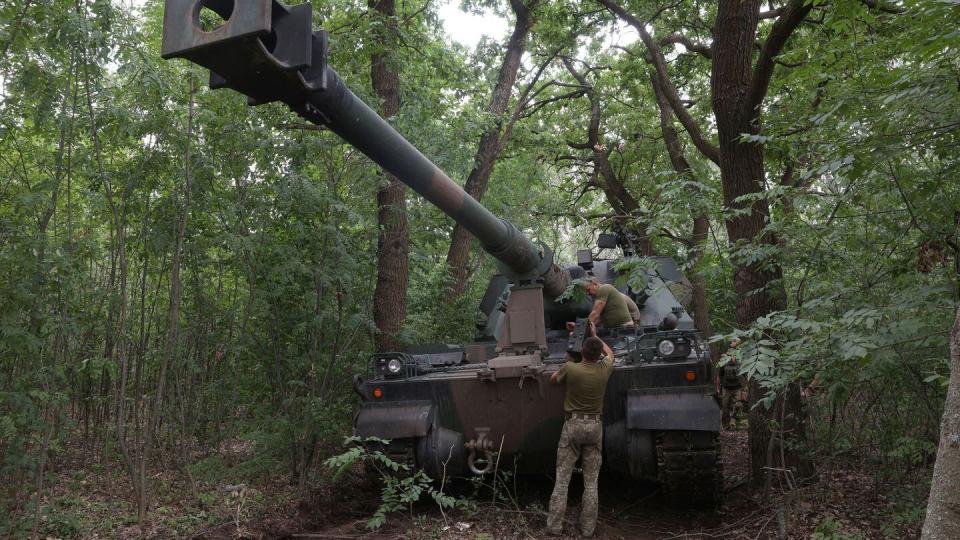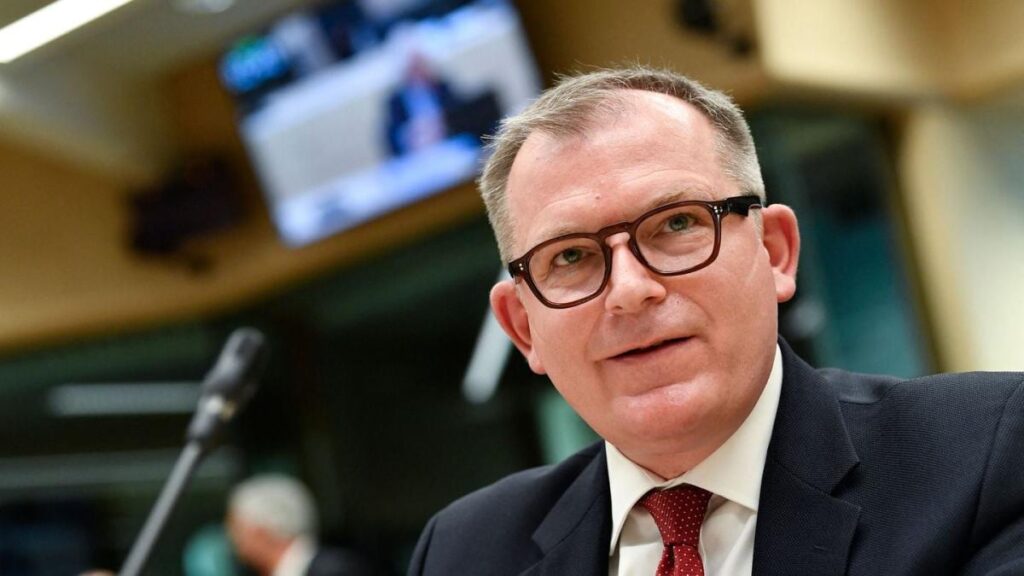As director of the European Defense Agency, former Czech Defense Minister Jiří Šedivý helps shape the European Union’s voice on defense and security, which was already growing louder before Russia’s full-scale invasion of Ukraine in 2022. Since then, the agency has slowly evolved from a facilitator of cooperation between member states, with sometimes vague outcomes, to a more hands-on broker of critical military equipment desperately needed in Ukraine. He spoke to Defense News about the complexities of designing a “menu” for purchasing 155-millimeter artillery shells and how to expand EU-NATO cooperation, which has been hampered by a long-simmering dispute with Turkey and Cyprus.
How willing are member states to cooperate in the field of defence, more than two years after the start of the Russian invasion?
It has been accelerated and strengthened, that is for sure. We see it in practice in many activities, which are primarily aimed at supporting Ukraine, but also at replenishing and strengthening their own national stocks.
Defence ministers approved a new capability development plan in November last year, which sets out the capability development priorities, or European defence priorities. This is something that, compared to the previous iteration, which was in 2018, is now much more focused on more advanced capabilities, high intensity operations, lessons learned or observed in Ukraine, and is very complementary to NATO. It is now being developed through what we call capability priority roadmaps, to deliver concrete capabilities across the spectrum of domains.
We have received very positive feedback and this will really accelerate cooperation, even from those Member States that may previously have been somewhat reluctant to embark on cooperation projects in the EU context.
Member states that are allies in NATO are much more socialized in NATO. But now we see that they actually understand that in combination with different incentives that the EU offers – joint procurement, but also for defense innovation, et cetera – they can get a higher added value from our frameworks, with our incentives, for capabilities that are relevant to NATO at the same time.
What are those incentives?
Everything from the European Defence Fund, the European Peace Facility for compensation of equipment donated to UA, to the yet to be established European Defence Industrial Programme, and so on. The incentive is ultimately money. But it is also the economies of scale that come from working together on collaborative programmes.
The EU’s new plans to fund a defence revival, explained
There seemed to be a reflex in Europe, after the Russian invasion of Ukraine, towards national decision-making, protectionism. It seems you didn’t notice that, so?
When the war started, our member states quickly started to supply military equipment to Ukraine, and we quickly realized that this is really a high-intensity war in Europe, unprecedented since World War II. That it could become a war of attrition in the long term. That the volumes of consumption of military equipment – particularly ammunition – are very demanding. So national stocks started to be depleted quite quickly as member states supplied Ukraine. And then there were the efforts to replenish, and indeed, the first instinct was national – to grab what was still on the shelves and available on the market. But then, with these incentives for joint purchasing, for example, we are now seeing a change.
Look at what we are doing in the area of 155 mm ammunition: 60 framework contracts, 10 Member States that actually contract through us. Our estimate is that the order volume is now around €350 million, which is not bad considering the current global demand for 155 mm ammunition. But at the same time, we still have a lot of spare capacity within the framework contracts that we have concluded with the industry.
So, to your question, I think there was an initial reaction towards instinctive individualism. But now, as it always takes some time to develop those new frameworks and incentives, the member states are actually more ready than ever to come together.


Is the 155 millimeter ammunition procurement order the largest procurement task you currently have?
There are still many bilateral or national activities going on. There is also the lead nation concept where Germany, Sweden and France have offered to open their own national framework agreements for interested member states. There are activities in NATO, NSPA and so on. It is important to note that we are just one piece of the mosaic.
Joint procurement is not necessarily our core task at EDA. We are not purchasing agents. We do not have a special directorate for doing procurement. So when we were approached by the Member State to carry one track of the 155mm ammunition initiative of the European Union, we had to do a little bit of internal reshuffling to be able to deliver. I have asked the Member States several times to reinforce us, at least in terms of a temporary deployment of experts, without success.
Ultimately, we managed to deliver those framework contracts with the industry – by issuing requests for information, by reaching out to the relevant industry actors. It covers four types of howitzers. You have the French Caesar, the Polish Krab, the Slovakian Zuzana and the German Panzerhaubitze 2000. There is no one-size-fits-all solution.
And within that you have two types of projectiles: longer range and higher explosive power. In addition, there are four components, since few manufacturers can provide complete, all-up rounds.
If you add all this up, you have a matrix of 36 slots. And for that we have concluded those 60 framework contracts. And we do all that with about 12 people.
It is a bit like Member States are given a menu with starters, main courses, etc., complete with prices, delivery times and things like that. Member States have all that. And it is now up to them to pick up those framework contracts and use them.
Have the Member States done this sufficiently?
There are reserve capacities. Our framework contracts were based on an initial request for information and still have the potential to contract up to €1 billion of 155mm ammunition. And we are not talking about ready-made purchases, but about production. What we contract today would be delivered within 12 to 24 months.
In May we saw the first delivery of ammunition purchased through us, based on a contract we awarded last summer.
We deliver, but ultimately it is the Member States that must put their money where their mouth is.
How much does a 155mm bullet cost?
There is fluctuation. But it is certainly much more than before the war started. There is no unit price. It can be from €4,000 to €10,000.
And your office has all the information from the sector to determine what a fair price is?
There is no such thing as a fair price, there is a market price.
There is a war going on in Ukraine and companies are feeling an increasing, desperate demand. Do you see that reflected in the market price?
There is an increase in prices, that is for sure. The growing demand is a factor. But so is the cost of all the inputs in the production chain, such as materials, components, gunpowder, labor, plus inflation. So, fair price… I would not fall into that category. I actually do not think that the industry, in general, would take advantage of the situation.
That’s where completeness of market information comes into play…
Nobody has complete information about the industrial capacities, about how many have already been delivered to Ukraine. Because it is scattered. Some Member States are more transparent about what they export to Ukraine, others are less transparent. And indeed, because we are in an environment of commercial competition, producers are also a bit cautious about disclosing all the costs.
It sounds like the multitude of 155mm artillery shell types is complicating the effort considerably. What would you like to see changed in an ideal world?
Well, in an ideal world, we wouldn’t have war. But the main lessons that we’ve learned from this are that we’re still far from ideal standardization. And one thing we can’t forget is that I’m sure that what’s happening in Ukraine in terms of using a plethora of different systems is unprecedented. And I’m talking about all systems, not just artillery. So this is something that’s already been addressed, both in NATO and in our standardization committee, how we can really accelerate standardization, leading to interoperable commonality. This is something that we really need to take seriously.
What is your view on achieving a ‘one-size-fits-all’ 155mm round? Should companies be forced to produce to that standard, or gently nudged?
Given the predominantly private ownership, you can’t force them. It might be easier for companies where states are the majority shareholders. We see it in Russia, how easy it was for them to switch to the war economy. But here, it has to be stimulated with funds. It has to start with demand, with defining flagship projects in areas that are beyond the capacity of any single member state. There is a top-down element: getting the industry to work better together, for example with the leverage of aggregate demand.
What is the status of improving the integration of EU defence activities with those of NATO?
First of all, there is no such thing as integration with NATO. There is very limited cooperation. And the fundamental problem with EDA and NATO is that we do not have a security arrangement that allows us to exchange classified information. This is something that we have to solve. But for this, political agreement is needed on both sides. And you know that sometimes it can be difficult for well-known political reasons. We are trying to get a technical arrangement between us and NATO as a first step – that regulates classified information. Then we will try to get an administrative arrangement with NATO, which would open the way, in predefined areas, for deeper cooperation.







